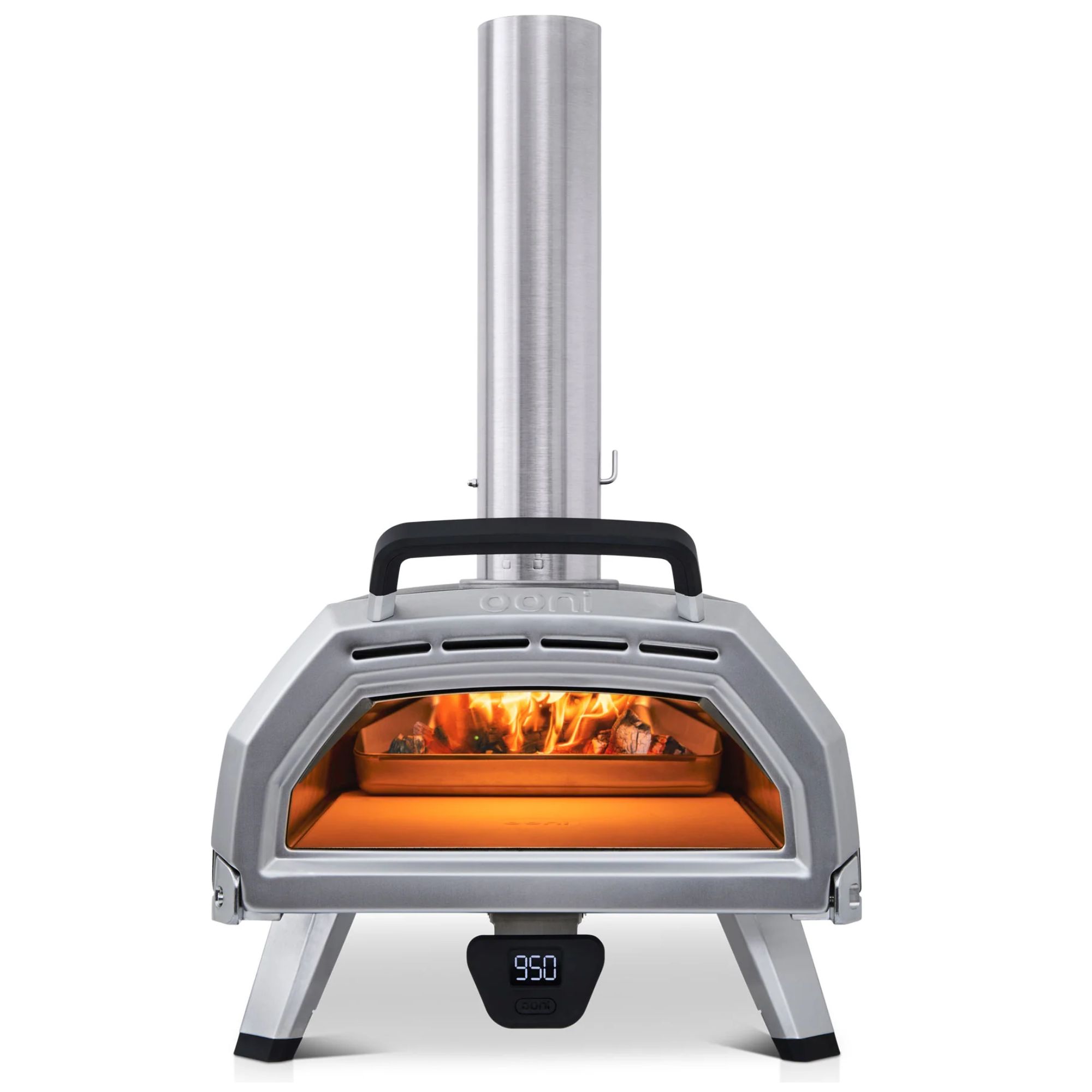How do pizza ovens work? Insight from the experts
This is exactly how pizza ovens work, and why regular ovens can't match their flavor


Pizza ovens are an ever-popular feature of our backyards, and the trend shows no sign of slowing down. The marketing materials claim that they can make much better pizza than you can make in the typical domestic oven.
However, the best pizza ovens can cost hundreds of dollars, and it's not immediately obvious how a pizza oven is any different to a normal kitchen oven.
I spoke to a food scientist about how pizza ovens work, and why they make much better food than conventional ovens.
What's the difference between a pizza oven and a normal oven?

When it comes to pizza ovens vs kitchen ovens, the main difference is that pizza ovens cook on stone, and usually use rolling flames. A kitchen oven has grill racks, and cooks using ambient heat.
Most importantly, a pizza oven can reach much hotter temperatures. Where a conventional oven maxes out at around 450°F, a pizza oven can reach 950°F.
Food scientist Dr. Bryan Quoc Le told me that 'A pizza oven is built in a dome shape, made up of fire-resistant brick and other materials that minimize heat loss from the center of the oven.' He adds that 'a conventional oven is usually made up of metal and is in a cubic shape, and so it has significant heat losses in the corners and edges.'

Dr. Bryan Quoc Le is a food scientist, food industry consultant, and author of the book 150 Food Science Questions Answered. He earned his Ph.D. in Food Science from the University of Wisconsin, Madison, and currently serves as a Faculty Research Fellow in the Department of Chemistry at Pacific Lutheran University.
How do pizza ovens use flame and smoke?

Unlike a conventional oven, in a pizza oven, the flame rolls along the top of the oven. This means that whatever you're making is licked by the flame, which adds a delicious char to your ingredients that you can't replicate in a conventional oven.
Some of my favorite pizza ovens are fuelled with wood pellets, giving pizzas a smoky flavor you won't find in most pizza ovens.
Design expertise in your inbox – from inspiring decorating ideas and beautiful celebrity homes to practical gardening advice and shopping round-ups.
What's the point of a cordierite pizza stone?
Unlike a conventional oven, pizza ovens cook using a pizza stone. These stones are almost always cordierite. Cordierite is a great conductor and reflector of heat, and it's part of why pizza ovens can reach such high temperatures. Dr. Bryan Quoc Le explains that 'Cordierite is a type of mineral capable of withstanding extremely high temperatures. The pizza stone is able to be heated very high and cool rapidly without fracturing.'
However, cordierite isn't just good for reaching high temperatures. It also improves the texture and flavor of your pizza crust. Dr Le told me that 'The porous construction of cordierite pizza stones allows it to absorb moisture as the pizza bakes, leaving a crisper bottom.'
How do pizza ovens get so hot?
The open flame of the pizza oven brings a lot of heat, and this is absorbed and reflected by the cordierite. Unlike most conventional ovens, the inside of a pizza oven is polished stainless steel, which further reflects the heat.
On top of that, the shape of a pizza oven focuses heat. Dr. Le told me that, unlike the cube shape of a kitchen oven, 'the dome shape of pizza ovens and the type of material used in their constructions help to keep the entire oven insulated, as well as reflect infrared radiation towards the center of the oven.'
Pizza oven FAQ
Can you use a pizza stone in a conventional oven?
You can use a pizza stone in a conventional oven, but it isn't as good as using a pizza oven. It improves the base of the pizza, but a conventional oven doesn't reach high enough temperatures to be as effective as a typical pizza oven.
For more advice on pizza ovens, take a look at my guide to how to clean a pizza oven.

As a gardens and lifestyle contributor, Alex makes sure readers find the right information to help them make the best purchase. Alex got his start in reviewing at the iconic Good Housekeeping Institute, testing a wide range of household products and appliances. He then moved to BBC Gardeners’ World Magazine, assessing gardening tools, machinery, and wildlife products.


